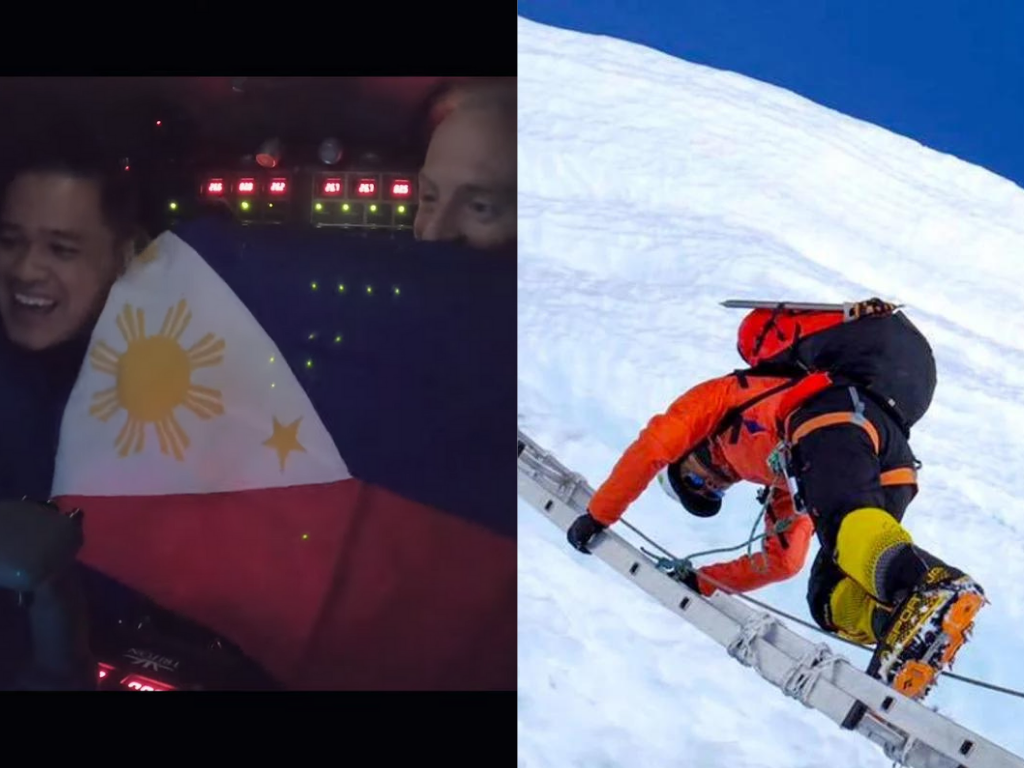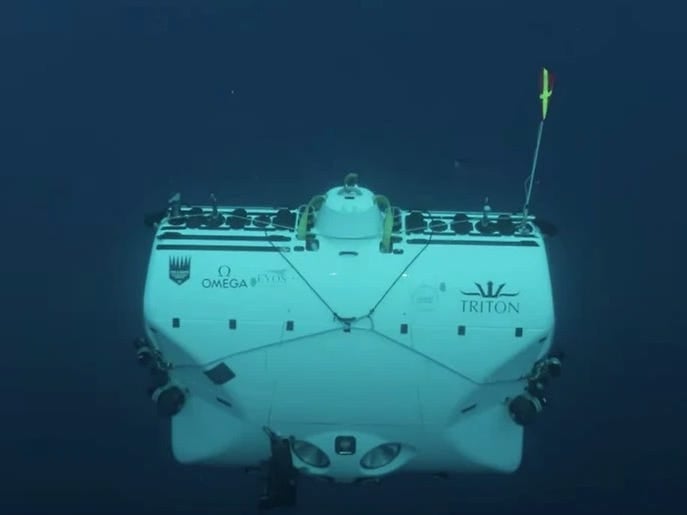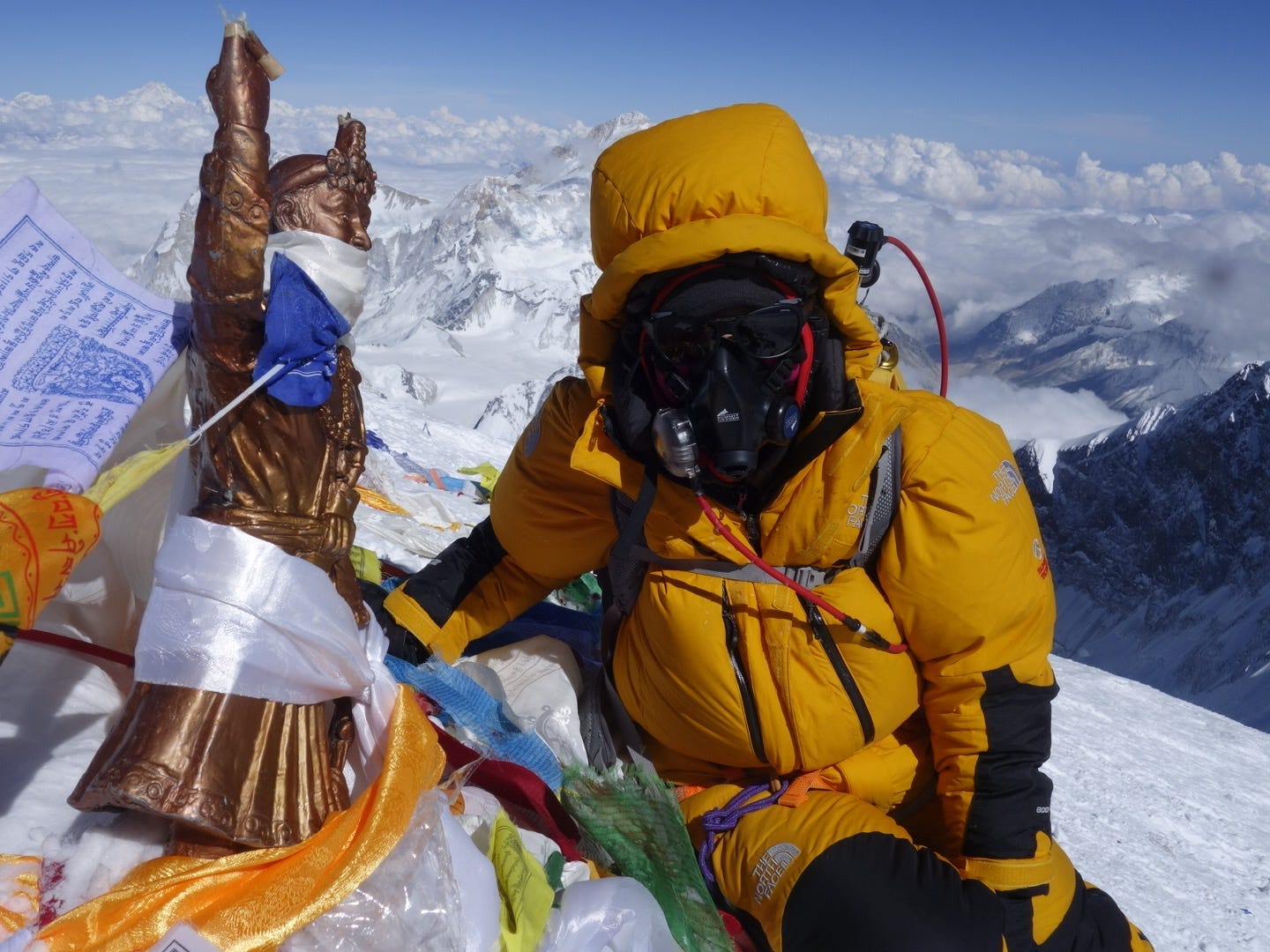
Caladan Oceanic and Ada Tsang
- While the rest of the world was in lockdown, Victor Vescovo, 55, journeyed to the depths of the Emden Deep, where no man has gone before.
- Two months later, Hong Konger Ada Tsang, 44, made it to the top of Everest in the fastest time ever recorded by a woman.
- They told Insider about what they saw, and what experiences life at Earth's extremes has to offer.
- Visit Insider's homepage for more stories.
The Emden Deep is the third deepest point in the ocean. It's a place where human life cannot survive and thrive, but US-based adventurer Victor Vescovo found being down there far less lonely and confining than sitting at home during the COVID lockdown.
While the world stayed isolated during the thick of the COVID-19 pandemic, Vescovo, 55, dived nearly 33,000 feet beneath the waves to the unexplored depths of Emden Deep in the Philippine Trench. Together with Filipino marine scientist Deo Florence Onda, Vescovo, became one of the first humans to explore this unknown part of the Earth in a manned submersible on March 23. It is the third deepest point on the planet, after Challenger Deep in the Mariana Trench and Horizon Deep in the Tonga Trench.
Two months later, a Hong Kong woman broke another world record – this time, on another of the planet's extremes. Insider reported that Ada Tsang Yin-hung, 44, reached the summit of the 29,031-foot peak on May 23. She was the fastest woman to do so, completing her ascent in 25 hours and 50 minutes.
But just what did these two adventurers see at these ends of the earth? And what does the planet have to offer mankind even in its harshest, most inhospitable environments? Insider spoke to Vescovo and Tsang to find out the answers to these questions.
A teddy bear at the bottom of the ocean

Verola Media/Caladan Oceanic
Ensconced in a deep-sea submersible more than 10 kilometers beneath the waves with no one but oceanologist Deo Florence Onda for company, Vescovo did not know what to expect. The organization behind his expedition, undersea tech company Caladan Oceanic, had earlier mapped the broad contours of the expedition area with sonar. But Vescovo and Onda were both none the wiser as to what they would see at the bottom of Emden Deep until they got there.
The duo took four hours to make their descent and spent around three hours on the ocean bed, exploring its soft, undulating planes and observing the marine life. Vescovo was shocked, however, to find what he described as "a variety of plastic debris" floating in those dark waters.
"There was a teddy bear, some discarded shirts, and most memorably, what was definitely a recyclable plastic bag," Vescovo said to Insider.
Vescovo speculated that the plastic waste likely found its way into the Emden Deep because the Philippine Trench is located along one of the most commercially traveled sea lanes, where trash is often dumped directly into the ocean.
"There's a sheer volume of pollution and human contamination because people often think that if they put plastic into the ocean, it'll just disappear," he said.
Despite this tragic sight, Vescovo still found beauty in the experience, calling the sojourn an other-worldly experience.
Vescovo told Insider that every trench he has been to has its own character.
"Deep ocean trenches seem very similar at first glance, but each is different. The Mariana Trench is incredibly vast, while the Tonga Trench is violent and rocky," he said.
He added that he found the sand-like dunes of the Emden Deep gentle, soft, and peaceful, while the bottom of the Arctic Ocean looks much more jagged and mountainous in comparison.
"I guess what drives me is this inherent sense of intense curiosity that was cultivated in me when I was a child. I've always wanted to know more, and to get to the other side of the hill to find out what lay beyond," he said.
Everest showed this record-breaking female climber the goodness of humanity

Ada Tsang/Handout
Ada Tsang Yin-hung says it was the power of the human spirit and the acts of kindness she saw while traversing Everest that truly moved her.
Tsang previously taught at a middle school but is now a leadership development team lead for delivery company Lalamove. She first conquered Everest in 2017 after a four-day trek to the top. But this time was different - she broke the 2018 record for the fastest ascent by a woman set by Nepali climber Phunjo Jhangmu Lama, who scaled Everest in 39 hours and six minutes.
"When you're doing a speed climb, there has to be absolute focus. The slightest mistake can lead to disastrous consequences. So if I'm being honest, I only saw one meter in front of me at any one time, because I knew if I looked around, or stopped to admire the scenery, it would sap my energy," Tsang said.
While it was a relief and an accomplishment to reach the top in record time, Tsang said it was the humanity and kindness displayed by other climbers that she observed on her ascent and descent that touched her.
She described how other climbers on the route made room for her politely and let her pass, cheering her on and providing encouragement while she forged her way forward to the summit of Everest, putting one foot in front of the other.
She noted, too, the selflessness of the sherpa on her climbing team - who without hesitation shared his limited oxygen supply with another frostbitten sherpa they came across who had lost consciousness on the descent.
"It was these rescues on the mountain that moved me. People were reaching out to each other and performing acts of kindness without regard for race or nationality," Tsang said.
'Nature has a big heart. She does not reject people who wish to try to reach the peak of this mountain'
Vescovo and Tsang have explored the extremes of the Earth, but they both seem to agree on one thing - that even in the harshest conditions, the world has much to offer.
"Everest humbles you and teaches you the important lesson of knowing the extent of your abilities. Nature has a big heart. She does not reject people who wish to try to reach the peak of this mountain," Tsang said. "But when you get there, you will learn quickly that you have to recognize when to quit, what your limits are, and the extent to which you can challenge yourself."
She added that she would be back on the mountain one day because she has an "unfinished goal" of getting to the peak in under 20 hours.
"When I got to the top of Everest, it felt, strangely, like a homecoming. I had the thought that it would not be my last time there. I always tell my team at work that I want to aim high and achieve high. At that moment, I felt like I had accomplished it, and that talk was not cheap. But I have other goals now, and most likely, I'll return," she said.
Meanwhile, Vescovo hopes to explore much more of the ocean.
"We forget how connected we are to the ocean and how much more there is to learn," he said.
"A major objective I have is to advance deep ocean tech more intensively, to the point where the oceans can be made accessible. We want to make it easier, too, for hundreds, and maybe even thousands of people to research and venture to where I have been," Vescovo added.
"I don't know how long we will take to do that. But what I do know is that one can never be done exploring," he said.